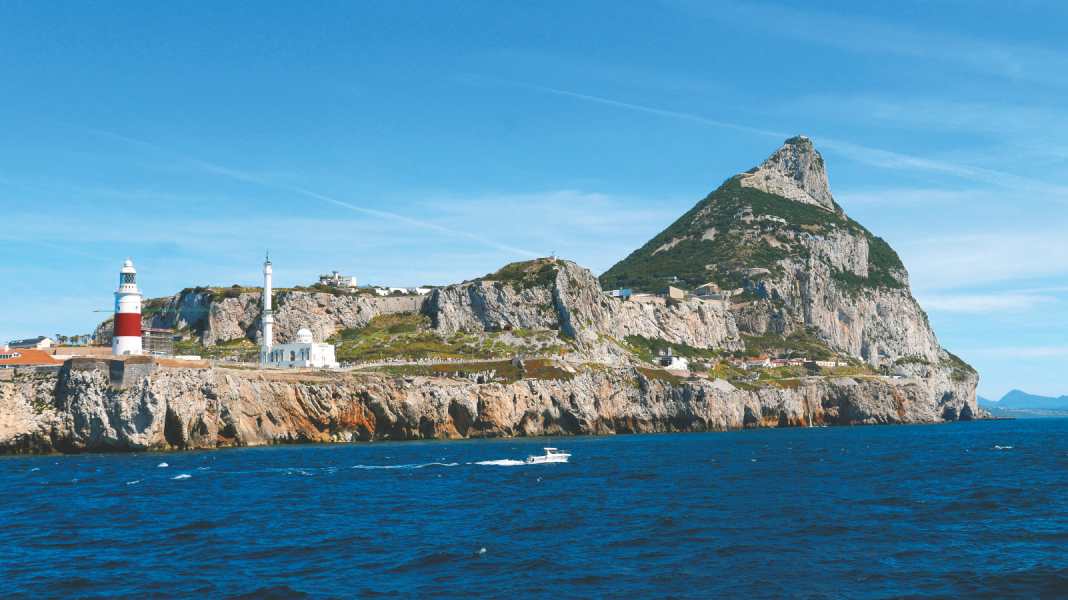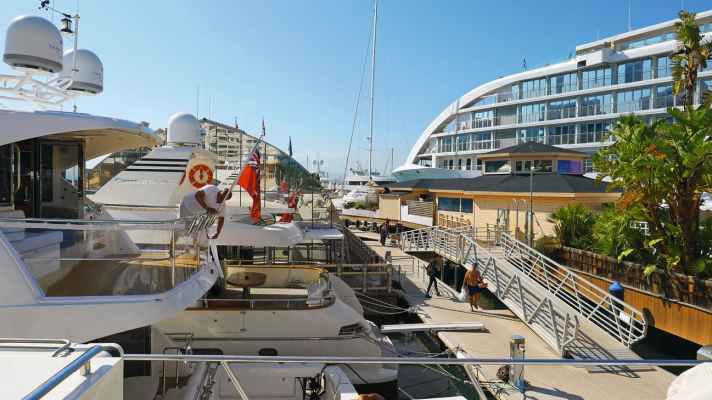
On our long journey to the Mediterranean, we are back at sea and travelling off the Spanish Atlantic coast towards the Strait of Gibraltar. Even from a great distance, we can see the silhouette of the Atlas Mountains on the African continent, towering over 4000 metres. On the way, we pass the historically significant Cape Trafalgar, where Admiral Nelson defeated the Franco-Spanish Armada in 1805. This marked the beginning of more than a century of British naval supremacy.
Less historical, but just as important for us, is the question of which harbour we should head for next: Tarifa at the southernmost point of the European continent? Or do we even dare to head for Ceuta, one of three small Spanish exclaves on the African coast?
Need more information? The area portrait of Ceuta and Gibraltar with many photos, service notes and a detailed map can be found in BOOTE issue 4/2019 (Available here).
Our maritime travel guide describes Tarifa as a very attractive tourist destination, but also as a rather yacht-unfriendly ferry harbour, so we decide without further ado to give it a miss in the truest sense of the word. What our friends from the sailing yacht "Blaubär" tell us later confirms our decision in retrospect: a hustle and bustle of ferries, hardly any moorings, omnipresent police, fences everywhere and behind the fences - refugees. The refugee routes in the Mediterranean have shifted from Turkey and Greece to the western Mediterranean. We sincerely hope not to see a boat and thus be spared from having to make decisions of conscience.

With the thrust of the Atlantic water flowing into the Mediterranean at high tide, we cross the strait and initially keep below the European coast before changing course towards Africa at the end of the Gibraltar Traffic Separation Scheme. There is heavy shipping traffic and a fresh wind, which makes the water even choppier in addition to the current.
We don't know exactly what to expect in Ceuta and the constant stream of urgent radio reports from Tarifa Radio about rubber dinghies carrying refugees creates a strange atmosphere. The images from the television of desperate people climbing over house-high wire fences are also in our minds. When we arrive in Ceuta, however, we see none of this and don't have the feeling that we are in Africa.
Ceuta has a population of 85,000, a busy ferry harbour and a very tidy marina. We are moored right next to the Civil Guard speedboats, who even help us - albeit somewhat reluctantly - to moor. For the first time, we have to tie up the stern to the pier and the bow with mooring lines - a procedure that is standard in the Mediterranean, but still completely unfamiliar to us. Our nerves are a little tense and we are also learning a lot, but in the end our "Azura" is safely moored at the quay.
A stroll through the city brings the next surprise: the cityscape is completely European in character and there is a long shopping mile in the centre. Apparently, various tax advantages attract not only Moroccans to shop across the border, but also visitors from mainland Spain. Diesel is also significantly cheaper here, but cannot compete with nearby Gibraltar - so our refuelling stop will have to wait.

Before we leave, I make a detour to the heavily guarded European border with Morocco - but without my wife, who doesn't think much of excursions of this particular kind. A strange feeling creeps over me on the bus. The majority of the passengers are veiled Arab women with full shopping bags. From the last bus stop before the border, you have to walk another 500 metres or so along a road populated by apparently idle people or people streaming towards the border.
All the other people apart from me are Arabs and I feel increasingly uncomfortable, even though I'm still in Spain. The dirty beach and the rubbish on the other side of the road, some of which people are digging around in, do the rest to give me an oppressive to eerie mood. So I break off this excursion into the unknown just before the control buildings and quickly make my way back.
From Ceuta, the route now takes us directly to Gibraltar. Contrary to our geographical imagination, the famous rock is not located directly on the strait named after it, but just behind it. Europa Point" at its southern end borders the bay of Algeciras to the east. The freighters and tankers lying in the roadstead are in no way inferior to the number of ships in the Strait of Gibraltar. After refuelling at unbeatably low prices, we moor up in the "Ocean Village Marina" - very close to the centre, but also very close to sports bars, restaurants and disco music. We could sing along from the boat or watch the live broadcast of the English Premier League on huge screens without getting up. Gibraltar is dominated by the English and their culture - who would expect anything else.
The Rock of Gibraltar, the upper part of which is a designated nature reserve, is well worth a visit. It is also home to the famous monkeys, who have developed a kleptomaniac streak in addition to their trusting behaviour. If you're not careful, you can quickly lose your glasses, handbag or shopping bag. We saw with our own eyes how a rucksack was opened and a paper bag was snatched. However, there was no food inside and the uninteresting T-shirt we had just bought ended up in the void. We generally recommend taking the cable car up the 400 metre high rock face and then walking back down again for several hours. Among other things, you will pass the huge St Michael's stalactite cave and shortly afterwards you can put your head for heights to the test on a swaying suspension bridge.
In glorious weather conditions, we manoeuvre out of the narrow harbour and circle through the ships lying in the roadstead. After rounding the "Europa Point" with its lighthouse and large mosque, "Azura" sets course for Marbella.

